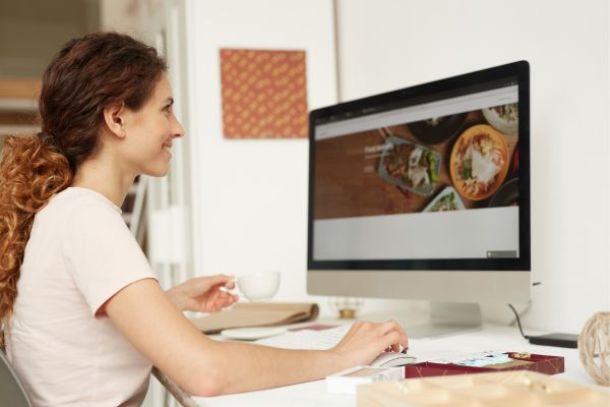How to Collaborate Effectively with Clients as a Designer
How to Collaborate Effectively with Clients as a Designer
In the world of design, collaboration between designers and clients is crucial to the success of any project. Whether you’re designing a logo, a website, or a complete brand identity, understanding how to work effectively with your clients can make the difference between a smooth process and a frustrating experience. Effective collaboration ensures that both parties are on the same page, that expectations are met, and that the final product not only meets but exceeds the client’s expectations. In this article, we’ll explore the key strategies for collaborating effectively with clients as a designer, from initial contact to project completion.
1. Understand the Client’s Needs and Expectations
The foundation of any successful collaboration is understanding the client’s needs and expectations. This goes beyond simply knowing what the client wants; it involves digging deeper to uncover the motivations behind their requests, their long-term goals, and their vision for the project.
Ask the Right Questions
At the start of any project, it’s crucial to ask the right questions. What is the purpose of the project? Who is the target audience? What message should the design convey? By asking detailed questions, you gain a better understanding of the client’s needs and can tailor your design approach accordingly.
Clarify Objectives
Ensure that the project objectives are clear from the outset. Misunderstandings about project goals can lead to dissatisfaction later on. Be sure to summarize the objectives in writing and get confirmation from the client to avoid any miscommunication.
Establish Scope and Budget
Defining the scope and budget of the project early on is essential. This includes determining what deliverables are expected, the timeline for completion, and the financial aspects of the project. Clear communication about these factors prevents surprises and helps manage expectations on both sides.
2. Set Clear Communication Channels
Effective communication is the backbone of successful collaboration. Without it, even the best intentions can lead to misunderstandings and frustration.
Choose the Right Tools
Select communication tools that work best for both you and your client. This could include email, video calls, project management software like Trello or Asana, and instant messaging apps like Slack. The key is to ensure that communication is consistent, clear, and documented.
Regular Check-ins
Schedule regular check-ins to discuss the project’s progress. This could be a weekly meeting or a quick daily update, depending on the project’s complexity. Regular communication helps keep the project on track and provides opportunities to address any issues before they escalate.
Be Transparent
Transparency is critical when collaborating with clients. If you encounter challenges or delays, inform the client as soon as possible. Clients appreciate honesty and are more likely to be understanding if they are kept in the loop.
3. Present Your Ideas Effectively
As a designer, presenting your ideas in a way that resonates with your client is vital. It’s not just about showing what you’ve created; it’s about explaining the rationale behind your design choices.
Tell a Story
When presenting your designs, try to tell a story that connects with the client’s objectives. Explain how your design decisions align with their goals and how they will appeal to the target audience. This approach helps clients see the value in your work and makes it easier for them to buy into your ideas.
Use Visual Aids
Visual aids can be incredibly effective in helping clients understand your ideas. Mockups, wireframes, and mood boards are excellent tools for showing how your design will look and feel in the real world. These tools also allow clients to provide more informed feedback.
Be Open to Feedback
It’s essential to approach feedback with an open mind. Clients may have different perspectives or preferences, and it’s important to listen to their input. While it’s your job to guide them towards the best design solutions, collaboration means being flexible and incorporating client feedback where appropriate.
4. Manage Revisions and Feedback
Revisions are a natural part of the design process. However, without proper management, they can lead to scope creep, missed deadlines, and frustration on both sides.
Set Clear Revision Guidelines
From the beginning, establish guidelines for how revisions will be handled. Specify how many rounds of revisions are included in the project scope and what constitutes a “revision” versus a “new request.” This clarity helps manage client expectations and keeps the project on track.
Prioritize Feedback
Not all feedback is equally important. Work with your client to prioritize which revisions are essential and which are more flexible. This approach helps you manage your time effectively and ensures that the most critical aspects of the project are addressed first.
Keep a Record of Changes
Document all requested changes and the reasons behind them. This not only helps you track progress but also provides a reference if there are any disagreements later on. Keeping a record of changes ensures that both you and the client have a clear understanding of the project’s evolution.
5. Educate Your Clients
Sometimes, clients may not fully understand the design process or why certain decisions are made. Educating your clients can help bridge this gap and foster a more collaborative relationship.
Explain the Design Process
Take the time to explain the steps involved in the design process, from initial concepts to final delivery. This transparency helps clients appreciate the work involved and sets realistic expectations for timelines and outcomes.
Discuss Industry Standards
Educate your clients about industry standards and best practices. For example, explain why certain design elements are more effective or why some choices may not work well in their specific context. This knowledge empowers clients to make informed decisions.
Share Resources
Provide clients with resources, such as articles or case studies, that support your design decisions. This not only helps them understand your approach but also builds trust by showing that your recommendations are backed by research and expertise.
6. Maintain Professional Boundaries
While building a good rapport with your clients is important, it’s equally crucial to maintain professional boundaries to ensure the project stays on track.
Respect Time and Deadlines
Set and respect deadlines for both yourself and your client. Make it clear when feedback is needed to avoid delays. Likewise, ensure that you meet your own deadlines to build trust and maintain a professional relationship.
Stick to the Scope
Avoid making changes to the project scope without discussing it with your client first. If the client requests additional work outside the agreed-upon scope, discuss the potential impact on the timeline and budget before proceeding.
Keep Personal and Professional Separate
While it’s great to develop a friendly relationship with your clients, it’s important to keep personal and professional boundaries clear. This ensures that both parties remain focused on the project goals and that communication stays professional.
7. Celebrate Successes Together
Finally, it’s important to celebrate successes with your clients. Recognizing milestones and achievements not only strengthens the relationship but also sets a positive tone for future collaborations.
Acknowledge Milestones
Celebrate the completion of key project phases, such as the approval of initial designs or the launch of a final product. A simple acknowledgment, whether through a thank-you note or a small gesture, can go a long way in building a strong client relationship.
Share Success Stories
If the project leads to significant results, such as increased sales or brand recognition, share these successes with your client. This reinforces the value of your work and builds a foundation for future collaboration.
Plan for Future Collaborations
Once a project is successfully completed, discuss potential future collaborations. If the experience was positive, both you and the client will likely be eager to work together again. Maintaining an ongoing relationship can lead to more opportunities and long-term partnerships.
Conclusion: Building Strong Designer-Client Relationships
Effective collaboration between designers and clients is about more than just delivering a finished product. It’s about building a relationship based on trust, communication, and mutual respect. By understanding your client’s needs, setting clear communication channels, presenting ideas effectively, managing revisions, educating your clients, maintaining professional boundaries, and celebrating successes, you can create a collaborative environment that leads to outstanding design outcomes and satisfied clients.

